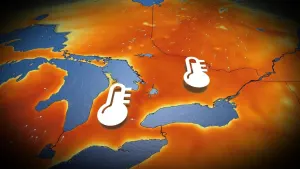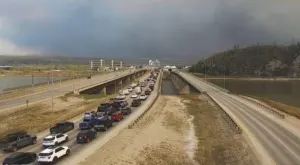
Ecuador's 'Throat of Fire' volcano shows signs of potential collapse
The Tungurahua volcano has been frequently active since October 1999 and most recently erupted in 2016.
A massive volcano in Ecuador that stretches over 5,000 metres above sea level is showing signs of a potential collapse that could cause a destructive landslide, a new study reports.
The Tungurahua volcano is known locally as both “Throat of Fire” and the “Black Giant” and is one of Ecuador’s most active volcanoes. It has been frequently active since October 1999, when an eruption injected ash 10 kilometres into the sky and prompted 25,000 people to evacuate, and most recently erupted in 2016.
Visit our Complete Guide to Spring 2020 for an in-depth look at the Spring Forecast, tips to plan for it and much more
The study analyzed how change on the volcano’s surface corresponds to activity within and beneath the volcano, such as seismic behaviour and magma movement. Data from this volcano was collected with two satellite systems that recorded observations from the west flank, which is showing signs of changes on the surface that might become a downsloping movement. Measurements from the satellites in 2015 show that this part of the volcano moved approximately 3.5 cm over a three week period, which coincided with multiple explosions and heightened seismicity.

Credit: Martin Zeise/ Wikimedia Commons. CC BY-SA 3.0
The researchers note that high rates on deformation of the volcano’s surface can indicate an impending eruption and a flank collapse that could trigger a landslide. This volcano’s most recent collapse occurred 3,000 years ago and caused a debris avalanche of rock, soil, and snow that travelled 15 kilometres and destroyed much of the area that was in its path.
Volcanologists are able to predict when a volcano will erupt by monitoring several indicators. As magma rises to the surface it can trigger seismic activity beneath the volcano and can also cause the surface of the volcano to deform as the magma rapidly travels upwards and pushes against the surrounding rock. The summit of the Kilauea volcano eruption bulged up to two metres before it erupted in 2018 and the parts of the northern flank on the Mount St. Helens volcano bulged several metres per day leading up to the deadly eruption in 1980.
The study says that the deformation is occurring because of shallow, temporary magma storage beneath the west flank and continued build up of this magma could promote further instability, which could trigger a collapse. There is also the potential that the volcano will remain stable, however, the researchers recommend that the volcano should be closely monitored for early warning signs of a potential collapse.










